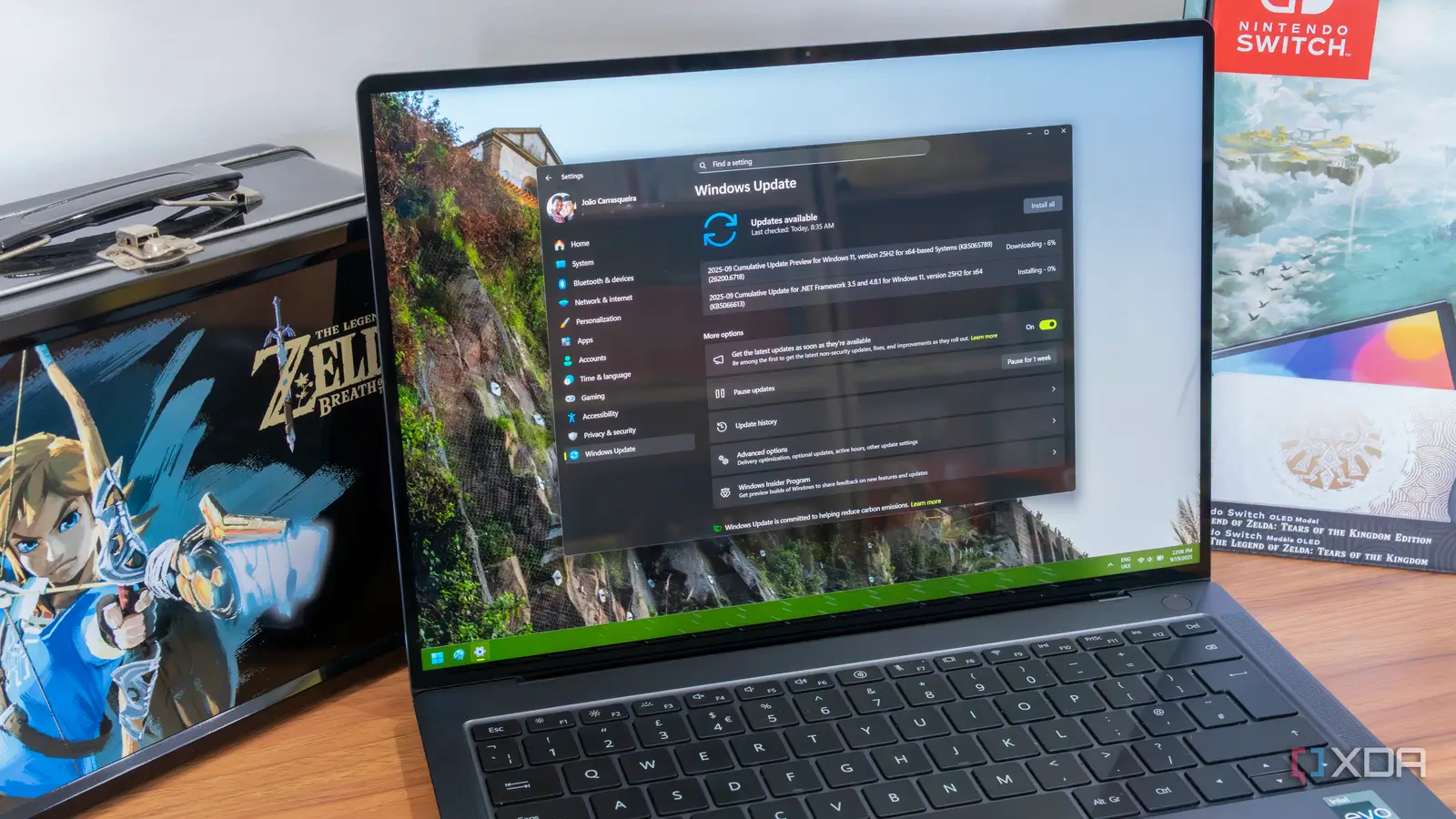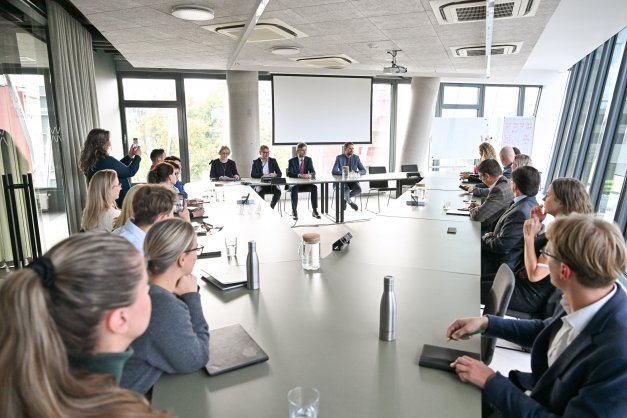
The recent release of macOS Tahoe along with the upcoming launch of Windows 11 version 25H2 have made for a sad realization as a former Windows user. This is the first year I’m a Mac user by the time the new annual updates come out, and it’s more obvious than ever that Windows 11 updates have become extremely boring.
It’s not just that Windows development has slowed down, but Microsoft’s approach to releasing new features and changes has made things more unexciting than ever. Meanwhile, Apple’s annual updates are a cycle that still works in terms of keeping discussion interesting, and more than ever, I’m glad to have switched away from Windows.
There is quite literally nothing new
When Windows 10 came out and we were set to get semi-annual feature updates, Windows development was the most exciting it’s ever been. Granted, this is also when I just started being able to test this kind of stuff in general, but getting major updates on a regular basis meant there was often something new to check out and something to discuss with my more tech-oriented friend circles. It was fun to be able to use these things, tell people about things they didn’t know existed yet, or complain (or celebrate) when something changed. Even something as mundane as the Recycle Bin icon got people talking.
After 2018, though, Windows 10 updates started to lose a lot of steam, and by 2020, they were pretty much nothing. It was a sad time to be a Windows user, but there was a light at the end of the… valley. Sun Valley was the codename for Windows 11, and when it finally got revealed in mid-2021, it was one of the most exciting times for me as a Windows fan. It all felt so fresh and fun, and with the switch to annual updates, I was even more excited. It was harder to make genuine progress and changes when developers had to focus on stabilizing a release every six months, so slowing down the cadence of releases should mean more features could be incorporated in each release while still having more time to polish it up. And we did see that with Windows 11 version 22H2, and again with version 24H2. Version 23H2 was a much smaller one, but at least Microsoft dropped a big feature update around the same time, and while those features weren’t exclusive to version 23H2, the timing definitely made it feel that way, and it was still a big moment.
Windows 11 version 25H2 legitimately adds no new features for end users, and even Microsoft acknowledges it plainly. Aside from some small changes for IT managers and the removal of very old features, there’s nothing here. It’s the most boring Windows 11 update ever, and it’s on par with the most boring Windows 10 updates — if not worse.
macOS Tahoe is a big change
It makes Windows look all the more boring when, right as Windows 11 version 25H2 is set to release, Apple drops its annual update for macOS and it’s one of the more significant ones in a while. macOS Tahoe brings a major visual refresh with the introduction of Liquid Glass, a new material that permeates most of the UI. Icons for apps can now be transparent, both with clear variants or tinted icons using a color of your choosing. Buttons and menus have new transparency effects that help bring out colors from your desktop background or from apps themselves.
But that’s not all, either. Apple introduced some serious productivity improvements with the addition of a clipboard history to spotlight, improvements to Shortcuts, and a redesigned app launcher that replaces the Launchpad (which is hated) with a small floating menu. There’s a lot to like here.
But just because this is one of the bigger updates, it doesn’t mean other updates are boring. It’s easy to mock Apple for not implementing some features other operating systems have at times, but year after year, Apple’s software updates are a big point of discussion starting at the beginning of the summer. People look forward to WWDC in early June because it’s always interesting to see what Apple is cooking up for its consumer platforms. Last year, macOS Sequoia introduced things like iPhone mirroring, a new Passwords app, new features for Notes, basic window tiling, and of course, Apple Intelligence. The year before that, macOS Sonoma made it possible to add widgets to the desktop, it introduced major improvements to Safari, redesigned Spotlight, some beautiful slow-motion screensavers, and more. There’s always something worth talking about.
Microsoft doesn’t care anymore
Timing is irrelevant
In the latter half of Windows 10’s life, and seemingly all of Windows 11’s, it’s become increasingly obvious that Microsoft just doesn’t care about when it releases new features anymore. Big changes can just be introduced with the monthly updates that used to focus on security and stability, and they’ll just drop out of nowhere. Feature updates don’t really mean anything anymore, since, clearly, Microsoft is willing to drop more features at any random time through cumulative updates rather than actually saving those feature drops for a “feature update”. The entire purpose of these updates now is to just extend the support period of your machine, as that’s what still defines how long you can get security updates.
Frankly, this isn’t just unexciting, it’s potentially more harmful. Just squeezing these features into updates that are mandatory means there are more chances for things to break when users don’t have a choice but to install a new broken update. And really, we see that happen because it feels like every other month, there’s a report about some major issues caused by the latest Windows updates. If Microsoft kept the monthly updates focused on security and stability and only added new features through the optional feature updates, I’m sure the Windows experience would feel a lot more stable for most users.
This is to say nothing of the way some features are enabled now. It’s so common for features to be hidden behind feature flags that are randomly enabled for some people and not for others, while others might just be based on server-side configurations, and users have no control over whether a certain feature is available to them. Microsoft refuses to provide users with any feeling of confidence in the product they’re using — they don’t know when new features are coming, they don’t know if they’ll get them, and a lot of the time, they don’t even have an option to force them to be enabled.
Even Microsoft’s events have made Windows the lowest-class citizen possible. Microsoft Build, its equivalent of Apple’s WWDC, rarely mentions Windows during the keynote. It’s all Azure, Copilot, and dev tools that seemingly have no impact on the user experience.
It’s okay to have fun
Tech is still used by humans
I can already see the comments on this article, rushing to tell me about how useless annual feature updates are, or that there’s no reason to be excited for any of those if you’re an actual tech expert, or any other choice words to say that it’s shallow and pointless to want operating systems to be fun. They’re just work tools, after all, right? And Microsoft Build is a developer event, so of course it should just talk to developers, shouldn’t it? No.
For better or worse, I am not a robot, and I actually like having fun. Just because I use tech for work and need it to work reliably, it doesn’t mean I don’t also enjoy it. I like the discussions, I like checking out new things. Wanting something to be fun or interesting is not a fault; it’s a human trait, and it feels incredibly cold and corporate to act like none of that matters.
But even if you believe that new features and changes are worthless and detrimental to a functioning operating system, it’s not like Microsoft’s disregard for timing and proper buildup to a release is helping at all. If anything, random features being released out of nowhere and included in mandatory updates just make things more likely to break your machine and interrupt your workflow. Windows is not known as a shining beacon of stability and reliability.
As for the “developer focus” of Microsoft’s events, are the developer tools really all that matters? Showcasing features for end users makes developers excited to use those features in their apps. Apple clearly knows that, and that’s why WWDC gets as much attention as it does. Even Google does a better job at it with its I/O developer event. You can save the technical details for developers for the dedicated sessions during the rest of the event, but the main keynote should get people excited.
Windows doesn’t make up for it, either
At least Linux is infinitely customizable
It’s not necessarily bad for an operating system not to get major updates on a frequent, predictable cadence, but if that’s going to be the case, then the fun factor should come from somewhere else. One of the things people love the most about Linux is how heavily customizable it is and how much you can experiment with it, and you can derive a lot of fun from just making the experience as much your own as possible. Choosing your desktop environment, window manager, extensions and widgets, and all of that makes Linux-based operating systems fun in their own right, even if the Linux kernel and specific distros don’t see a ton of changes with each release.
Windows doesn’t have that in its favor as much, either. Customization options seem to be more and more limited with each new version, and most of the apps that give you more freedom of choice are paid, so a lot of people just aren’t going to consider them. Even if they did, more often than not, those apps are still more limiting than what you can find on Linux. It almost feels like a “worst of both worlds” scenario, and it really shows why I’m much happier these days using macOS and Linux than I am on Windows.
Something has to give
It’s unfortunate to see the state of Windows 11 today from the perspective of someone who just enjoys tech. The operating system still exists, it still functions and does everything you’d expect it to do. But the fun I had when I first joined the Windows Insider Program just isn’t there anymore, and I wish that wasn’t the case. I want to hope something will change, but if Microsoft was willing to let go of one of its biggest visionaries— Panos Panay, former head of the Surface and Windows teams — then I just don’t believe there’s any interest in fun among the company’s decision makers. Here’s hoping I’m proven wrong sooner rather than later.



